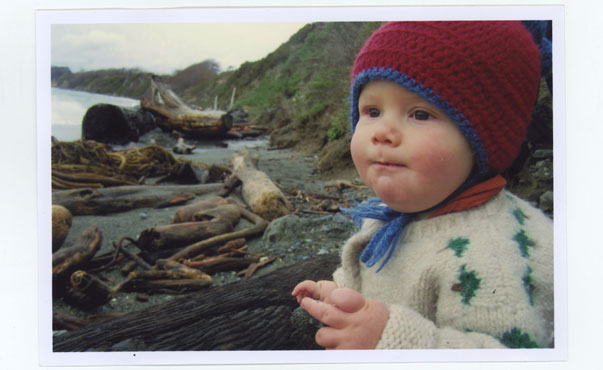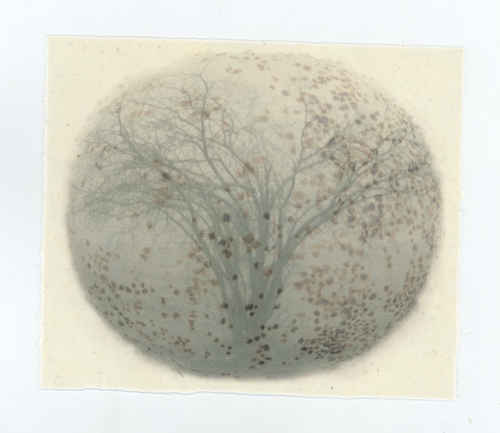|
|
being present in the future
In our 2008 Writing Contest, ascent invited readers to explore their relationship to sustainability on a personal, spiritual level. The depth of reflection and creativity in all the submissions amazed us.

Asher’s World
by Zane Parker
The future rolls away from us, along the horizon, where the sea meets the sky. It’s always there, just beyond the edge of vision, in the imperceptible curve of the earth, receding as we tip towards the sun, tumbling onwards…
My notion of the future was brought squarely into the present with the birth of my son, Asher. Born in our small earthen home on our land, nestled in the hills of the Cowichan Valley on southeastern Vancouver Island.
Now, after the linear progression of seasons through the first year of life, he’s about to discover the notion of recurrence, and of cycles, with the return of spring, and the beginning of his second year on the planet.
As a father, my practice is to see the world through his eyes and feel the world through the firm grasp of his fingers on a gritty ocean pebble. My practice is to participate in the immediacy of his dance with life – the sheer wonder of the sea, the startling apparition of a seagull, the taste of salt. “Oooooo,” as Asher says in his sing-song, prehensile language.
There are threats I can sense from my vantage, a few feet higher above sea level – the lurking fear that we humans will mess up, will not figure out how to live well and live simply in this moment. The immensity of our possible failure.
But here, Asher is at home, at home in his skin, scrabbling on the beach, at home in the world. I squat back down and see the world afresh – kaleidoscoping with him into the patterns of sand, the jumble of bull kelp, and the soft raking of waves on the shore.
Together, we breathe in the sea air and look to the horizon.
Zane Parker is a writer, activist and father. Together with his family he is building a homestead, planting gardens, and writing about life occasionally on his blog.
Michael McColly’s comments:
In “Asher’s World,” a father joyfully “kaleidoscopes” us into the world of his son as he plays with him on a seashore among the rocks and kelp and sand. Children come into the world asking for only one thing: love and its multiplying manifestations. They, too, can be our teachers, reminding us of our instinct to care, be patient and selfless, and to recognize the fragility of all living things.

cycle
by Tania Love
black walnut; a tree and its fruit, a self-renewing cycle
a life-giving force and an inhibiting force
squirrels horde, feed, bury the fruit
planting a response to the moment
preparing for something yet to come
the fruit remains a potentiality
sometimes forgotten in the soil
sprouts and remembers its tree form
tree breathes, is shaped by the force of the wind, drinks of the sky and soil
growing ring after ring it records each moment moving into the next
a force
a paradox
this tree that bears the fruit of pleasure and healing
this breathing being, in its roots, canopy and fruit,
bears also a toxin that inhibits the respiration of other sensitive plants
what lives is born of the residue of the past, fruits planted
in living, we plant
the residue we leave behind will decide what thrives in generations to come and
what life forms cannot survive
I draw on paper made from textile waste
with the black walnuts of the tree in my garden
the ink from the hulls, a rich brown used by da Vinci in his notes
and Native Americans before him
I draw the black spots found on leaves over and over again
these black spots, a mutation, like a map of the stars
I am reminded of the possibility for growth and decay
The village of Elora, Ontario has been Tania Love's home for the last 6 years where she works as a visual artist and a yoga instructor. Tania looks forward to continued exploration of sustainability and her art practice during her upcoming artist residency at Blue Mountain Center in N.Y. www.art.tanialove.com
Michael McColly’s comments:
Yoga can reveal how creativity is an expression of intelligence that allows us to see into the nature of things and thus into the nature of ourselves. In “Cycle,” poetry becomes a medium to observe and embody the “force” and the “paradox” that exists for both the writer and her subject – a black walnut tree. The intimacy of this poet’s language opens up how any object can become a sacred mandala or teacher.
|